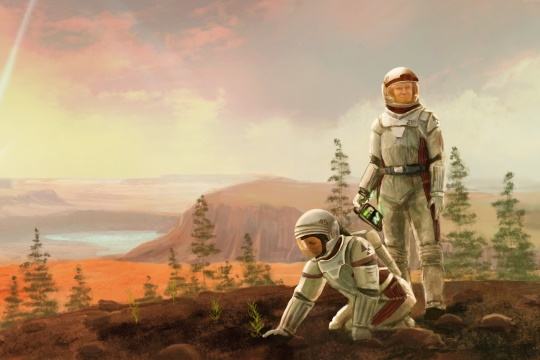Terraforming
Terraforming is the process of environmentally engineering a planet or moon so that it is better suited to human habitation (more terra-like) but the process is time consuming even assuming a viable candidate is identified. There are some three hundred habitable worlds across The Extent but considerable more non-habitable, most worlds being resource worlds (mining or military) few deemed worthy of a name. Terraforming is split into 4 main phases: Candidate selection, Establishment, Terraforming and Colonisation. Once a planet is stabilised the majority of the terraformers drop into a hibernating state but in some cases, the terraforming effect needs to be maintained and the terraformers remain active to ensure the planet remains habitable.
 Early colonisation was on "Earth-like" worlds within the following basic range limits:
Early colonisation was on "Earth-like" worlds within the following basic range limits:
 Early colonisation was on "Earth-like" worlds within the following basic range limits:
Early colonisation was on "Earth-like" worlds within the following basic range limits:
- Gravity: seven to fifteen metres per second squared (0.7 to 1.5G).
- Atmospheric Pressure: eight hundred to one thousand five hundred kPa (80 to 150%).
- Atmospheric Oxygen: eighteen to twenty-five percent (inversely related to pressure) plus an otherwise neutral mix of other gasses (usually nitrogen).
- Temperature: two hundred and fifty to three hundred and twenty Kelvin.
- Land/Water Ratio: too much water or too much land and agriculture will fail regardless of how well terraformed the planet may be; basic guidance is that land and water should exist in a preferred ratio of between ten/ninety and fifty/fifty.
- Minerals
- Distance: perhaps the most important consideration in the sense that distance defines the extent of "The Goldilocks Zone" so not only is the average orbital distance (from primary) important but also the extremes since that can impact gravity fluxes, temperature and general radiation levels to name but a few. Candidates affected by such extremes are unlikely to be considered viable for terraforming.
- Gravity: whilst high or low gravity worlds will be considered any candidate higher than two standard gravities or less than half is unlikely to be considered viable. Lower gravity worlds are less able to maintain an atmosphere whilst higher gravity worlds will be problematic for colonists.
- Temperature: terraforming is not normally considered a realistic possibility when the temperature range is lower than 250 or higher than 350 Kelvin.
- Pressure: at optimum pressure (all other factors being normal) replication rate should occur once every six to ten hours and planetary engineers working rule of thumb is that terraforming replication rate decreases exponentially as pressure deviates from the Earth normal.
- Moisture: extremes of humidity can adversely affect the replication rate of the replicators & terraforming robots. Whilst all terraforming will result in some system loss significant extremes can cause high levels of replicator/terraformer malfunction or even total failure.
- Meteor bombardment: Water, minerals and required gasses such as oxygen are supplied by impacting slow moving asteroids into the candidate planet.
- Raising planetary temperature: Can be achieved using orbital reflectors, massive (multi-million square kilometre) swathes of carbon black on the planetary surface or, in rare cases, massive nuclear bombs in orbit, high atmosphere or on the ground.
- Drop a single terraforming cell (occasionally two if planetary conditions are extreme).
- The cell(s) replicate to reach "critical density".
- Cells switch production to terraforming units.
- Once complete the terraforming cells drop into a hibernation state but may be reactivated for environmental maintenance if required.



